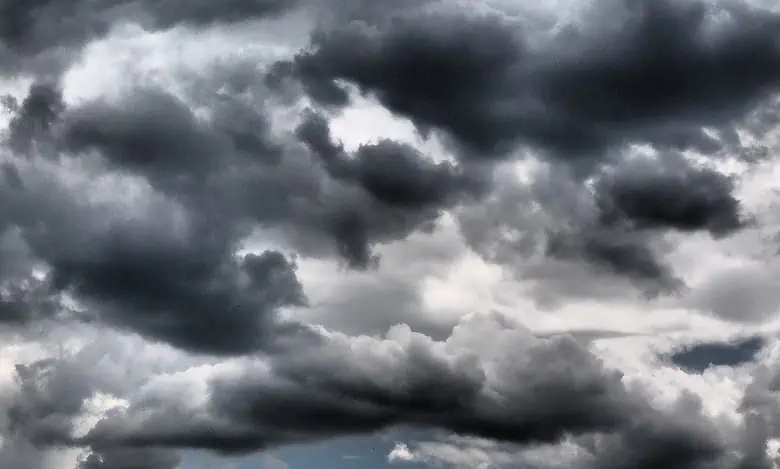The current weather situation in Telangana and Andhra Pradesh serves as a reminder of the power and unpredictability of nature. While the monsoon season is vital for the agrarian economies of these states, it also brings challenges that need to be managed carefully. As the rains continue, the focus should be on minimizing damage, protecting lives and livelihoods, and ensuring that the necessary infrastructure is in place to handle such extreme weather events.
Torrential Rains in Telangana and Andhra Pradesh: An In-Depth Analysis of the Weather Impact and Future Outlook
As the monsoon season progresses, Telangana and Andhra Pradesh are currently grappling with scattered rainfall, which is expected to intensify in the coming days. The southern districts of Andhra Pradesh, including Tirupati, Chittoor, and Kadapa, are particularly vulnerable to these weather patterns. This article delves into the ongoing weather situation, its impact on the local population, and what to expect in the days ahead.
The Current Weather Scenario: A Closer Look
Both Telangana and Andhra Pradesh have been experiencing varied rainfall patterns over the past few weeks. While some regions have seen light showers, others have been hit with heavy downpours. The India Meteorological Department (IMD) has issued warnings of increased rainfall activity, especially in the southern districts of Andhra Pradesh, where the rains are expected to become more intense.
In Telangana, the rain has been more sporadic but still significant, with Hyderabad and its surrounding areas witnessing periodic heavy showers. The rainfall has led to waterlogging in urban areas, disrupting daily life and causing traffic snarls in major cities like Hyderabad. Meanwhile, in the rural regions, farmers are both hopeful and cautious. While the rain is crucial for their crops, excessive rainfall could lead to flooding, damaging crops and affecting livelihoods.
Southern Andhra Pradesh: Bracing for the Downpour
The southern districts of Andhra Pradesh, particularly Tirupati, Chittoor, and Kadapa, are forecasted to receive heavy rainfall in the coming days. These regions are no strangers to the monsoon’s fury, but this year’s intensity is a cause for concern. The IMD has already issued alerts for these areas, advising residents to take precautions against potential flooding and landslides.
Tirupati, known for its religious significance and home to the famous Tirumala Venkateswara Temple, is particularly vulnerable. The temple town has seen a rise in pilgrim footfall recently, and the heavy rains could disrupt travel plans and temple activities. Authorities are on high alert, preparing for any contingencies that may arise due to the worsening weather.
In Chittoor and Kadapa, the situation is similar. Both districts have a history of dealing with severe weather events, but the predicted intensity of this year’s monsoon is unusual. The local administration has been working to clear drains and prepare for possible evacuations in flood-prone areas. Farmers in these districts are particularly concerned, as the timing and intensity of the rain will directly impact their crop yields.
The Broader Impact on Telangana and Andhra Pradesh
The ongoing rains in Telangana and Andhra Pradesh have several implications:
Agriculture: Both states are heavily reliant on agriculture, and the monsoon season is crucial for crops like paddy, cotton, and maize. While rainfall is necessary for these crops, excessive rain can lead to waterlogging, root rot, and crop failure. Farmers are anxiously monitoring the situation, as their livelihoods depend on a balanced monsoon.
Urban Flooding: Cities like Hyderabad in Telangana and Vijayawada and Visakhapatnam in Andhra Pradesh are at risk of urban flooding. Inadequate drainage systems and rapid urbanization have exacerbated the problem. Heavy rains can lead to severe waterlogging, disrupting transportation, damaging property, and even posing health risks due to waterborne diseases.
Infrastructure: Continuous rainfall can weaken infrastructure, leading to road damage, landslides, and disruptions in power supply. The administrations in both states are on high alert, monitoring key infrastructure to prevent accidents and ensure public safety.
Public Health: The combination of heavy rainfall and poor sanitation can lead to an increase in vector-borne diseases like malaria and dengue. Public health officials are urging residents to take precautions, such as using mosquito repellents and ensuring clean water storage.
Religious and Cultural Activities: In Andhra Pradesh, particularly in Tirupati, the monsoon season coincides with several religious festivals. The heavy rains could impact these events, leading to disruptions in pilgrim activities and potential loss of revenue for the temple and local businesses.
What Lies Ahead: Predictions and Preparations
The IMD has forecasted that the intensity of the rain is likely to increase over the next few days, especially in the southern districts of Andhra Pradesh. Telangana is also expected to continue experiencing scattered showers, with some areas receiving heavy rainfall.
Authorities in both states are taking the necessary precautions. In Andhra Pradesh, the government has deployed disaster management teams in vulnerable districts, and evacuation plans are in place for flood-prone areas. In Telangana, the municipal corporations are working round the clock to clear waterlogged areas and ensure that the drainage systems are functioning optimally.
Residents are advised to stay informed about the weather conditions and follow the guidelines issued by the local authorities. Those living in low-lying areas should be prepared for possible evacuations and should stock up on essential supplies.
The Long-Term Perspective: Climate Change and Monsoon Patterns
The erratic nature of this year’s monsoon raises questions about the long-term impact of climate change on weather patterns in India. Both Telangana and Andhra Pradesh have seen variations in their traditional monsoon patterns in recent years, with some regions experiencing drought while others face floods.
Climate experts warn that such extreme weather events are likely to become more common as global temperatures continue to rise. This calls for a re-evaluation of current infrastructure and agricultural practices to make them more resilient to such changes. Governments at both the state and central levels need to invest in climate-resilient infrastructure, improve forecasting systems, and educate the public about the risks and necessary precautions.
Staying Vigilant and Prepared
The current weather situation in Telangana and Andhra Pradesh serves as a reminder of the power and unpredictability of nature. While the monsoon season is vital for the agrarian economies of these states, it also brings challenges that need to be managed carefully. As the rains continue, the focus should be on minimizing damage, protecting lives and livelihoods, and ensuring that the necessary infrastructure is in place to handle such extreme weather events.
Also Read:
IMD Hyderabad Predicts Two Days of Heavy Rains
By staying informed, prepared, and proactive, the people of Telangana and Andhra Pradesh can navigate the monsoon season safely, turning what could be a period of adversity into one of resilience and strength.
Last Updated on Monday, August 12, 2024 4:25 pm by Admin


